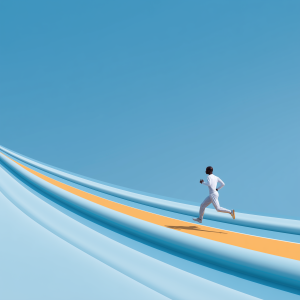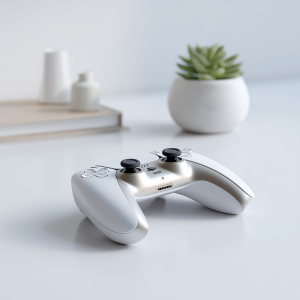Building a Sustainable Work Routine for Long-Term Success
A sustainable work routine helps you maintain productivity without sacrificing your health. Supporting overall well-being, not just productivity, is essential—sustainable routines promote mental and physical health, stress management, and a better work-life balance. Creating balanced work habits requires more than just willpower—it needs a strategic approach based on your personal energy patterns and work needs. Similar to the marathon runner, its not about sprinting out in the first few miles but rather being in it for the long run. This guide offers practical strategies to build a sustainable work routine that supports both your professional goals and personal wellbeing.
What You Will Learn
- Assessing your current work patterns
- Essential elements of sustainability
- Building your personalized routine
- Burnout prevention strategies
- Templates for different work styles
- Long-term maintenance techniques
Key Takeaways
- A sustainable work routine balances productivity with personal wellbeing
- Regular breaks increase overall productivity rather than reducing it
- Energy management works better than strict time management
- Personalizing your routine based on your energy patterns is essential
- Setting realistic goals helps prevent burnout and keeps you motivated by breaking larger objectives into manageable steps
- Small, consistent habits create lasting routines better than major changes
- Regular review and adjustment keeps your routine sustainable long-term
Signs of an Unsustainable Work Pattern
Recognizing the warning signs of an unsustainable work routine is the first step to making meaningful changes. Many people continue harmful work patterns until they experience serious consequences.
Warning Signals to Watch For
Your body and mind provide clear signals when your work routine isn’t sustainable:
- Persistent fatigue that doesn’t improve after rest
- Decreased productivity despite longer work hours
- Declining quality of work output
- Increased irritability with colleagues or clients
- Difficulty concentrating or making decisions
- Sleep disruptions (trouble falling asleep or staying asleep)
- Physical symptoms like headaches, back pain, or digestive issues
- Loss of interest in work you previously enjoyed
If you notice three or more of these signs, your current work approach likely needs adjustment. The goal isn’t to push through these warning signals but to respond with appropriate changes.
Tracking Energy Fluctuations
Understanding your natural energy rhythms is crucial for creating a sustainable work routine. Most people experience predictable energy fluctuations throughout the day.
Start by tracking your energy, focus, and mood at different times:
- Create a simple spreadsheet or use a note-taking app
- Rate your energy level (1-10) every hour for one week
- Note what activities you were doing during high and low energy periods
- Look for patterns in your data (morning energy peaks, afternoon slumps)
As you review your data, identify the specific point in your day when your energy is at its lowest. Knowing this lowest energy point allows you to schedule less demanding tasks during that time and reserve your peak periods for more challenging work.
This information becomes the foundation for designing your personalized routine. Aligning your most demanding tasks with your natural high-energy periods can dramatically improve both productivity and sustainability.
How Can You Measure Your Current Sustainability?
Beyond subjective feelings, specific metrics can help you objectively assess your routine’s sustainability:
Recovery Time Ratio: How much time do you need to recover from work sessions? If you need more recovery time than productive time, your routine isn’t sustainable.
Weekly Energy Trend: Does your energy steadily decline from Monday to Friday? A sustainable routine should allow you to maintain relatively consistent energy throughout the week.
Sleep Quality Score: Track your sleep quality using a simple 1-10 scale or a sleep tracking app. Consistently poor sleep often indicates an unsustainable work pattern.
Task Completion Rate: What percentage of planned tasks do you actually complete? A sustainable routine allows for realistic planning and consistent completion.
Personal Satisfaction Index: Rate your overall satisfaction with both work quality and personal life on a weekly basis. True sustainability should support both areas.

Ramon’s Take
Core Components of a Sustainable Work Routine
A truly sustainable work routine contains several key elements that work together to support long-term productivity and wellbeing.
The workplace environment plays a crucial role in fostering sustainability. Access to natural light has been shown to improve focus, mood, and overall well-being, while incorporating plants into the workspace can reduce stress and create a healthier, more organized setting. Ergonomics is also essential, using ergonomic furniture and setting up your workspace properly supports physical health and sustainability. By optimizing these aspects of the workplace, you can better support a sustainable work routine.
Strategic Break Implementation
Contrary to popular belief, breaks aren’t productivity killers, they’re productivity multipliers. Research from the University of Illinois found that brief diversions from tasks dramatically improve the ability to focus for extended periods. Making your breaks enjoyable can further boost motivation and help you stick to regular break routines.
Effective break strategies include:
Micro-breaks (30-60 seconds)
- Look away from your screen
- Stretch your hands and wrists
- Practice deep breathing
- Rest your eyes by focusing on distant objects
Short breaks (5-15 minutes)
- Walk around your workspace
- Drink water or have a healthy snack
- Do quick physical exercises
- Practice mindfulness or meditation
Longer breaks (30+ minutes)
- Take a proper lunch away from your desk
- Go for a walk outside
- Have a meaningful conversation
- Engage in a different type of mental activity
The most effective break schedule depends on your work type and personal preferences. Many people find success with variations of these approaches:
- The Pomodoro Technique (25 minutes of work, 5-minute break)
- 90-minute focus blocks followed by 15-minute breaks
- 52/17 method (52 minutes of work, 17 minutes of rest)
Energy-Task Alignment Principles
Not all work requires the same type of energy. By categorizing tasks and matching them to your energy states, you can create a more sustainable workflow. One key advantage of this approach is that aligning tasks with your natural energy levels can boost productivity and support a healthier work-life balance:
High-energy tasks (require peak mental focus):
- Strategic planning
- Creative problem-solving
- Important decision-making
- Learning new skills
- Writing complex content
Medium-energy tasks (require engagement but less intense focus):
- Routine problem-solving
- Team meetings
- Email management
- Editing or revising work
- Data analysis
Low-energy tasks (can be done on autopilot):
- Administrative work
- Organizing files
- Scheduling
- Responding to simple emails
- Routine updates
Schedule these task types according to your personal energy map from the previous section. Most people benefit from tackling high-energy tasks during their peak performance times, saving low-energy tasks for natural energy dips.
Establishing Clear Work Boundaries
Without clear boundaries, work expands to fill all available time and mental space. Drawing a clear line between work and personal life is essential to prevent overlap and maintain a healthy work-life balance. Sustainable routines require deliberate limits:
Time boundaries:
- Defined start and end times for your workday
- Protected time blocks for deep work
- Scheduled breaks that you actually take
- Technology-free periods (especially before bed)
- Stick to your designated work hours to maintain balance and avoid letting work spill into personal time
Space boundaries:
- A dedicated workspace (even in a small home)
- Visual cues that signal “work mode” vs. “personal mode”
- Physical separation between work and relaxation areas when possible
Communication boundaries:
- Set expectations for response times
- Communicate your availability to colleagues
- Create signals that indicate when you’re in deep focus
- Establish rules for after-hours communication
Boundaries aren’t selfish, they’re necessary for sustainability. By clearly defining when, where, and how you work, you create the conditions for both productivity and recovery.
Step-by-Step Routine Building Process
Creating a sustainable work routine is an iterative process that requires careful planning and adjustment. It’s important to leave room for flexibility and adjustments within your schedule to ensure your routine remains effective and sustainable over time.
Environmental Assessment:
- Workspace setup (lighting, ergonomics, noise)
- Support systems (family, colleagues, services)
- Access to wellness resources or programs that promote wellness and productivity
Preliminary Data Collection
Before building your routine, gather essential information:
Work Requirements Analysis:
- Core work hours required by your organization
- Meeting schedules and other fixed commitments
- Project deadlines and priority levels
- Communication expectations from your team
Personal Pattern Inventory:
- Your energy map from the previous section
- Sleep and wake preferences (early bird or night owl?)
- Family and personal commitments
- Health requirements (meal times, medication, exercise)
Environmental Assessment:
- Workspace options and limitations
- Potential distractions in your environment
- Available tools and resources
- Support systems (family, colleagues, services)
- Access to supportive resources and environments that promote wellness and productivity
This foundation of self-knowledge and situational awareness allows you to create a routine that works with your reality, not against it.
Productivity Mapping Techniques
With your data collected, create a visual representation of your ideal workday:
- Time Blocking
- Divide your day into chunks of time dedicated to specific activities
- Start with fixed commitments (meetings, deadlines)
- Add high-energy tasks during your peak performance times
- Schedule breaks and transitions between activities
- Include buffer time for unexpected issues
- Energy-Based Scheduling
- Color-code your time blocks based on energy requirements
- Ensure high-energy tasks align with your natural peak times
- Group similar energy-level tasks together when possible
- Plan for energy recovery after particularly demanding activities
- Constraint Setting
- Identify your “golden hours” for most important work
- Set strict limits on low-value activities
- Create “no meeting” zones to protect focus time
- Establish firm start and end times for your workday
Tools for this process range from simple paper planners to digital solutions like time blocking apps and calendar systems. Choose what works for your preferences and technical comfort level.
What Testing Methods Yield the Best Results?
The most effective routines emerge through methodical testing and refinement:
The Two-Week Trial Period:
Rather than attempting to overhaul your entire routine at once, implement your new schedule for two weeks. This timeframe is long enough to see patterns but short enough to make adjustments before habits solidify.
Single-Variable Testing:
Change only one element of your routine at a time. For example, test a new break schedule while keeping other aspects of your routine consistent. This approach helps you identify which specific changes are most effective.
Reflection Questions:
Evaluate your routine regularly with these questions:
- Did I complete my most important tasks today?
- How was my energy level throughout the day?
- Which parts of my routine felt natural? Which felt forced?
- What unexpected challenges arose?
- How did this routine affect my non-work life?
Objective Measurements:
Track concrete metrics to assess your routine’s effectiveness:
- Task completion rates
- Focus duration
- Energy levels throughout the day
- Stress indicators
- Sleep quality
Remember that creating a sustainable routine is a process of continuous improvement, not an instant transformation. Small, consistent adjustments lead to significant long-term benefits.
Burnout Prevention While Maintaining Output
A sustainable work routine must actively prevent burnout while supporting consistent productivity. Harnessing the power of positive changes, such as increased daylight, can help support sustainable routines and prevent burnout.
Mental Recovery Break Strategies
Effective breaks are active recovery opportunities, not just pauses in work:
Cognitive Switching:Changing the type of mental activity provides better recovery than simply stopping work. Switch from analytical to creative tasks, or from focused work to diffuse thinking.
Nature-Based Restoration:Even brief exposure to natural environments can significantly reduce stress and restore attention. A five-minute walk outside or simply looking at natural scenes can reset your mental state.
Movement Breaks:Physical activity counteracts the negative effects of sedentary work. Simple options include:
- Walking meetings for phone calls
- Desk stretches or yoga poses
- Quick stair climbing
- Microbreak exercises
Mindfulness Practices:Brief mindfulness activities reset attention and reduce stress:
- Guided breathing exercises
- Body scan meditations
- Sensory awareness practices
- Gratitude moments
Integrate these strategies into your daily schedule as non-negotiable elements, not optional extras. The quality of your breaks directly impacts the quality of your work.
In the evening, it’s also important to wind down and reduce artificial stimuli like blue light to align with your body’s circadian rhythm, supporting natural sleep patterns and recovery.
Routine Adjustments for High-Pressure Periods
Even the best routine needs flexibility during intense work periods:
Emergency Protocol Planning:
Create a modified version of your routine for high-pressure periods that preserves the most essential elements of sustainability:
- Shorter but more frequent breaks
- Simplified meal plans
- Abbreviated but non-negotiable sleep schedule
- Reduced but present exercise
Sustainability Minimums:
Identify the absolute minimum requirements for your wellbeing that cannot be compromised regardless of work pressure:
- Minimum sleep threshold
- Essential nutrition needs
- Brief but critical recovery activities
- Communication with key support people
Post-Crunch Recovery:
Plan for intentional recovery after high-intensity work periods:
- Scheduled downtime
- Extra sleep
- Reduced workload
- Deeper restoration activities
Having these protocols established before high-pressure situations prevents making poor decisions during stress that lead to burnout.
Energy-Sustaining Daily Practices
Small daily habits create the foundation for sustainable energy:
Hydration and Nutrition:
Your brain requires proper fuel and hydration for optimal function:
- Keep water visible and accessible during work
- Plan balanced meals and snacks at regular intervals
- Limit caffeine to morning hours
- Choose foods that support steady energy levels
Movement Integration:
Regular movement throughout the day maintains energy and focus:
- Stand or walk during phone calls
- Use a sit-stand desk if available
- Set movement reminders
- Take the stairs when possible
Attention Management:
Protect your mental energy with deliberate attention practices:
- Single-tasking for important work
- Batch similar tasks together
- Use notification blocking during focus periods
- Practice regular information detox
These daily practices seem small individually but compound to create significant energy advantages over time.

Ramon’s Take
Tailored Templates for Various Working Styles
Different types of work require different routine structures. These templates provide starting points for customizing your own sustainable routine. Employees can adapt these templates to suit their unique roles and work environments.
- Head of Community: In creative or collaborative environments, a Head of Community can play a key role in fostering engagement, supporting creative professionals, and helping develop sustainable routines.
Creative Professional Framework
Creative work requires balancing structured productivity with space for inspiration and innovation:
Morning Routine (7:00-10:00)
- 7:00-7:30: Morning preparation (no digital devices)
- 7:30-8:00: Inspirational input (reading, art, music)
- 8:00-10:00: Creative deep work (most important creative tasks)
Mid-Day Routine (10:00-2:00)
- 10:00-10:15: First break (movement, hydration)
- 10:15-12:00: Continued focused work or collaborative sessions
- 12:00-1:00: Lunch break with complete disconnection
- 1:00-2:00: Administrative tasks and communications
Afternoon Routine (2:00-5:30)
- 2:00-3:30: Second creative block (moderate energy tasks)
- 3:30-3:45: Rejuvenation break
- 3:45-5:00: Finishing tasks and planning
- 5:00-5:30: Reflection and shutdown ritual
Key Sustainability Features:
- Protected morning hours for peak creative work
- Inspirational input before output
- Clear boundaries between creation and administration
- Regular movement to stimulate creative thinking
- Leadership from a Head of Community to foster creative engagement, support, and routine development
Knowledge Worker Daily Structure
Knowledge work demands deep focus periods balanced with collaboration and information processing:
Morning Routine (8:00-12:00)
- 8:00-8:30: Planning and priority setting
- 8:30-10:00: Deep work block for complex analysis
- 10:00-10:15: Quick break
- 10:15-12:00: Meetings and collaborative work
Mid-Day Routine (12:00-2:00)
- 12:00-12:45: Lunch and physical activity
- 12:45-1:00: Review morning progress
- 1:00-2:00: Email and communication management
Afternoon Routine (2:00-5:30)
- 2:00-3:30: Second deep work session
- 3:30-3:45: Rejuvenation break
- 3:45-5:00: Lower-energy tasks and wrap-up
- 5:00-5:30: Next-day planning and shutdown
Key Sustainability Features:
- Email batching to prevent constant interruptions
- Clear separation between deep and shallow work
- Regular review and planning sessions
- Defined shutdown routine to prevent work creep
How Do You Adapt to Fluctuating Workloads?
Many roles involve varying intensities of work throughout the week, month, or year. Here’s how to create a sustainable routine that adapts:
Core and Flex System:
- Identify your “core hours” that remain consistent regardless of workload
- Create “flex zones” that expand or contract based on current demands
- Maintain regular start and end rituals even when hours fluctuate
Intensity Scaling:
- Define three versions of your routine: Standard, Accelerated, and Recovery
- Set clear triggers for switching between versions
- Create transition protocols between different intensity levels
Workload Smoothing:
- Use time blocking to distribute work more evenly when possible
- Batch similar tasks across multiple projects
- Build buffer time into your schedule for unexpected demands
- Negotiate deadlines proactively rather than accepting all timelines
Recovery Integration:
- Schedule intentional recovery periods after high-intensity work
- Build “maintenance mode” routines for lower-demand periods
- Use lighter periods to rebuild energy reserves
- Incorporate regular review to identify unsustainable patterns before they cause problems
- Leverage community support, such as workplace groups or peer networks, to help manage fluctuating workloads and provide emotional support.
The key to managing fluctuating workloads sustainably is having predetermined protocols rather than making decisions under pressure. This proactive approach prevents the reactive cycles that lead to burnout.
Long-Term Routine Sustainability
Creating a routine is only the beginning—maintaining it over time requires ongoing attention and adjustment.
Weekly Review and Adjustment Process
A structured review process keeps your routine relevant and effective:
Schedule a Weekly Review:
Set aside 30-60 minutes at the same time each week (many people prefer Sunday evening or Friday afternoon).
Review Questions:
- What worked well in my routine this week?
- What created friction or stress?
- Did I maintain my energy throughout the week?
- Were my breaks effective and refreshing?
- Did my routine support both work quality and personal wellbeing?
Adjustment Protocol:
- Make one small change based on your review
- Document the change and expected impact
- Test for at least one week before making additional changes
- Keep a log of adjustments and their effects
Monthly Integration:
Once per month, conduct a deeper review to identify patterns across multiple weeks and make more substantial adjustments if needed.
Tools like weekly review templates or digital journaling apps can help structure this process and track changes over time.
Adapting to Changing Priorities
Your routine must evolve as your work and life circumstances change:
Routine Transition Planning:
When facing a significant change (new project, role change, personal life shift), create a transition plan:
- Identify which elements of your current routine to preserve
- Determine which elements need modification
- Set a timeline for implementing changes
- Plan extra self-care during transition periods
Priority Realignment:
Regularly reassess how your routine aligns with your current priorities:
- List your top 3-5 professional and personal priorities
- Evaluate how your current routine supports each priority
- Identify misalignments or gaps
- Adjust time allocation to better reflect true priorities
Seasonal Adjustments:
Different seasons may require different approaches:
- Adjust work hours based on daylight patterns
- Modify exercise routines for weather conditions
- Plan for holiday disruptions or busy seasons
- Use natural transitions (new year, season changes) as routine reset points
The most sustainable routines are not rigid but responsive, evolving alongside your changing needs and circumstances.
Accountability Systems for Consistency
External structures help maintain routine consistency when motivation fluctuates:
Accountability Partnerships:
- Schedule regular check-ins with a colleague or friend
- Share specific routine goals and challenges
- Report on progress and receive feedback
- Celebrate successes together
Tracking Systems:
- Use habit tracking apps or simple paper trackers
- Record key routine metrics daily
- Look for streaks and patterns
- Make tracking visible in your workspace
Environmental Design:
- Create visual cues that trigger routine behaviors
- Remove friction from positive routine elements
- Add friction to routine-breaking temptations
- Use location-based reminders
Consequence and Reward Structures:
- Establish meaningful rewards for routine consistency
- Create appropriate consequences for routine disruption
- Use positive reinforcement more heavily than negative
- Link routine behaviors to existing motivations
These accountability systems provide external structure when internal motivation inevitably fluctuates, helping maintain consistency through challenging periods.
FAQ About Sustainable Work Routines
How long does it take to establish a sustainable work routine?
Research shows that habit formation typically takes between 18-254 days, with an average of 66 days. For work routines, expect at least 2-3 months of consistent practice before your new patterns feel automatic. Start with small changes and build gradually for better long-term results.
Can a sustainable work routine help with work-from-home challenges?
Yes, a structured routine is particularly valuable for remote work. It creates boundaries between work and personal life, provides rhythm to your day, and helps compensate for the lack of external structure. Remote workers benefit from clear start/end rituals and defined workspaces to maintain these boundaries.
Should I use the same routine on weekends as weekdays?
Most people benefit from a modified weekend routine that maintains key elements (like sleep schedule and basic self-care) while allowing more flexibility. This “weekend routine lite” preserves your body’s rhythms while providing psychological refreshment and autonomy.
How do I handle unexpected interruptions without derailing my routine?
Build buffer time into your schedule (about 20% of your day) to absorb interruptions. Create an “interruption protocol” with quick steps to note where you left off, estimate interruption time, and schedule when to return to your task. Practice the “bookmark technique” of leaving clear notes about where to resume.
What’s the ideal break frequency in a sustainable work schedule?
Research suggests taking a short break (5-15 minutes) every 60-90 minutes of focused work, with microbreaks (30-60 seconds) every 20-30 minutes. However, this varies based on work type and personal factors. Experiment to find your optimal break frequency by tracking focus quality after different break patterns.
How do I know if my routine needs adjustment?
Watch for warning signs like decreasing productivity, energy depletion by day’s end, sleep disruptions, increased frustration, or declining work quality. Regular check-ins using a 1-10 scale for energy, focus, and satisfaction can help identify patterns before they become problems.
Can technology help maintain a sustainable work routine?
Yes, appropriate technology can support routine maintenance through time tracking apps, automatic break reminders, habit formation tools, and environment control (like focus mode and notification blocking). The key is selecting tools that reduce friction rather than adding complexity to your system.
Should I incorporate exercise into my work routine?
Including movement in your work routine significantly improves sustainability. This doesn’t require formal workouts—even brief movement breaks (5-10 minutes) every few hours improve circulation, mood, and cognitive function. Many people find morning or lunchtime exercise particularly beneficial for energy management.
How do seasonal changes affect sustainable work routines?
Seasonal variations in light, temperature, and social calendars can significantly impact your energy and focus. Create seasonal variations of your core routine that adjust wake/sleep times, exercise locations, light exposure, and social commitments while maintaining your fundamental structure.
What’s the difference between a sustainable and productive routine?
A productive routine optimizes for maximum output in the short term, while a sustainable routine balances productivity with wellbeing for long-term performance. Sustainable routines may appear less productive in the short term but prevent burnout and maintain consistent output over extended periods.
Creating Your Personal Sustainable Work Routine
A sustainable work routine balances productivity with personal well-being, making work manageable for the long term. The best routine is one you can maintain consistently, adapting it as your circumstances and needs change.
Start by implementing small changes based on the principles in this guide. Pay attention to your energy patterns, build in regular breaks, and create clear boundaries between work and personal time. Conduct weekly reviews to refine your approach, making one adjustment at a time.
Remember that sustainability isn’t about perfection—it’s about creating a system that works with your natural rhythms and supports both your professional goals and personal health. By taking a thoughtful, personalized approach to your work routine, you can achieve more while feeling better in the process.

Ramon’s Take
References
- Harvard Business Review: The Making of a Corporate Athlete
- Mayo Clinic: Job burnout: How to spot it and take action
- American Psychological Association: The road to resilience
- Journal of Occupational Health Psychology: Recovery experiences
- National Institute for Occupational Safety and Health: Stress at work
- UC Berkeley’s Greater Good Science Center: Work-life balance









